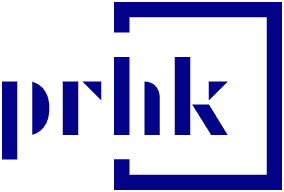PRHK Viewpoints: Continued investment in tech solutions will help SMEs rise above challenges in 2023
Continued investment in tech solutions will help SMEs rise above challenges in 2023
Article written by Kevin On, General Manager, The Hoffman Agency, Hong Kong
(4 min read)
2022 will be a year to remember for those of all sizes in the tech industry. Whether you are working inside a tech company, an agency working with a tech brand, or an investor with stake in a tech start-up, it has been a rollercoaster ride.
The conflict in Ukraine exerted a drag on the global economy which also pushed up inflation early in the year. The US Chips and Science Act that followed changed the dynamics of the global semiconductor supply chain and shifted strategic focus and investments for many hardware companies. In the third quarter, major tech companies started to restructure and cut headcount to improve efficiency, and in anticipation of the slower year ahead. More recently, the breakdown of several major crypto exchanges will likely expedite the call for more stringent regulations across the globe.
As a result, tech stocks have tumbled from their all-time high as layoffs, inflation and rising interest rates continue to shake up the industry. Investors have lost roughly USD 7.4 trillion on the 12-month drop in the Nasdaq. In the start-up world, the easy money is gone after the investment peak at the end of 2021 according to EY’s venture capital team. Big or small, companies are much more defensive than offensive in their financing. They see it as the only way to ride out the storm.
“For the next several years, leading technology providers must play a leading role in helping enterprises use innovative technologies to slide through the current storms of disruption. Technology and IT is not about where we cut – technology is where we invest to help the rest of the business navigate the recession,” said IDC analyst Rick Villars in a recent ZDNET article.
Rick nicely sums up what many tech companies are trying to tell their customers. Simply put, organizations must balance growth through technology investments with cost cutting.
The term ‘digital transformation’ has been overused, and in some cases misused. Nonetheless, it is clear that technology will continue to play a big role in transforming and fortifying business operations. As someone running a mid-size integrated marcoms consultancy and working with tech companies across different verticals, here are some of the tech-backed measures that I see helping to streamline and simplify business operations for SME owners.
1. Automation of tedious tasks to improve productivity
A tremendous amount of time and effort is spent scanning business expense receipts, sending paper contracts to multiple parties for signature, and on various other mundane administrative processes. Yet software solutions are readily available for practically every process, from employee expense reporting on mobile and payroll accounting software to cloud-based HR performance review platforms. By automating tedious or time-consuming administrative tasks, staff can focus on doing what they are best at while management can use data-driven decision intelligence to reduce the cost of wasted opportunities.
2. Remote as well as local hiring to expand your options
As the World Economic Forum has noted, talent acquisition and retention is also one of the biggest challenges facing SMEs around the world. For businesses and industries that allow for flexible work arrangements or remote working, employers should experiment with solutions such as candidate relationship management suites, skills and job matching platforms and HR analytics in conjunction with tried-and-tested approaches such as job boards and LinkedIn. The latest recruitment software and online platforms will include key features like job requisition management, automated sourcing, candidate tracking, pre-employment testing, as well as screening and reference checks, opening doors to candidates in different markets with the skills you are looking for.
3. Virtual workspaces to enhance the hybrid experience
For remote-first or hybrid organizations, virtual workspaces will not replace the physical office but will eventually become an important part of the digital employee experience. One may argue that our second life in the metaverse is still years away, but metaverse-like platforms are already creating an immersive employee experience for meetings, training and social events. For hybrid organizations, there is a need to better manage and utilize the physical workspace, and this is whereproptech and space management software can play an important role. Future workspaces will need to change responsively depending on the forecasted capacity and how staff need to use the workplace.
The outcomes of the above technologies and solutions (and indeed most technology adoption) are cost reduction, productivity gains and a step towards a more efficient operation. But even for business owners and heads of operations who are sold on the idea of digital transformation, it can be difficult to know where to start. Cost is always a key consideration, but it shouldn’t be the only one.
Weighing the setup costs versus the opportunity cost as a result of inefficiencies should be the first step. Then identify solutions that can address the bottlenecks impacting the most people in the organization. Lastly and most importantly, educate staff about the benefits of the technology and offer training across the organization — instead of just handing them a user manual — so that they feel genuinely empowered by the new technology.
To be sure, new technology can be daunting, especially as an SME. It pays to think of it as an experiment rather than a full-blown exercise in ‘transformation’. As with any procedure, breaking deployment down into stages, and focusing on solving the problems at hand, can make it manageable and most importantly, rewarding.

